American Red Squirrel
Tamiasciurus hudsonicus
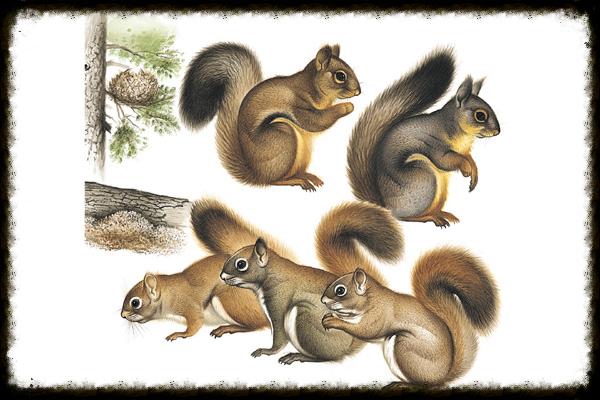
Description
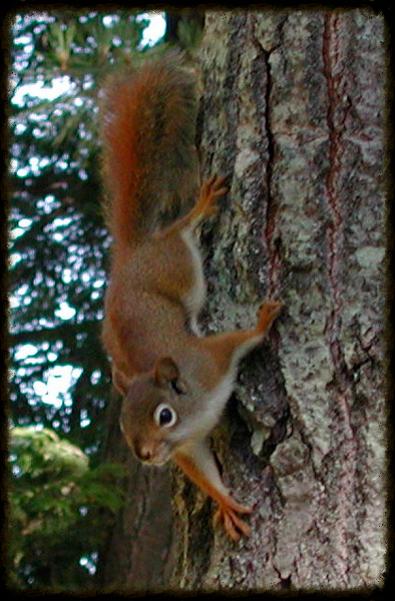
Behavior
Red squirrels are primarily diurnal, but on occasion exhibit nocturnal activity. During the spring and summer they are most active in the morning and afternoon, but as fall approaches they become highly active all day in preparation for the food shortages associated with winter. In the winter, red squirrels peak their activity around midday to take advantage of warmer temperatures. Adverse weather may result in reduced activity, but it is unlikely that squirrels will remain in the nest for more than 1 day without foraging. As the temperatures drop, squirrels become less active, and it has been reported that at temperatures of -31.6 degrees Celsius, red squirrels become completely inactive. This likely varies geographically because squirrels living in Fairbanks, Alaska would have to be actively foraging at these temperatures or they would be confined to their nest for weeks.
Throughout most of their range, and especially in coniferous forests, both male and female squirrels vigorously defend exclusive territories from competitors. Defense of these territories occurs year-round but is most obvious in autumn when squirrels are stockpiling cones and when competition from subordinate squirrels is at its peak. In New York forests, which are dominated by deciduous trees, squirrels often exhibit overlapping home ranges and occasionally defend only nests and caches from intruders. Their territories range from 2400 to 48000 square meters.
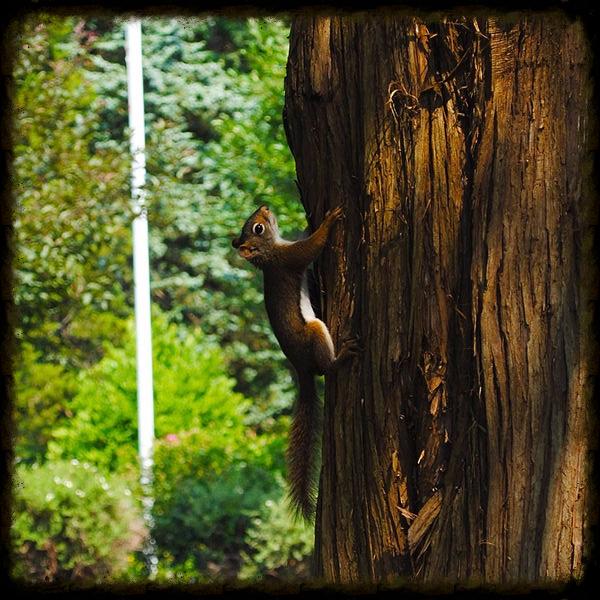
Habitat
Red squirrels occupy northern boreal coniferous forests abundant with conifer seeds, fungi, and interlocking canopies. This limits them to mountain ranges on the southern and eastern boundaries of their range. In the Rocky Mountains they have been found at elevations up to 2,500 ft (762 m). Populations of red squirrels occur in different habit conditions due to the vastness of their range. They occur in both temperate and polar environments and are considered to be primarily arboreal. They can be found in a mixed variety of forests including coniferous, deciduous, and mixed forests and they are also able to thrive in suburban and urban settings, as long as cool, coniferous forests with dense, interlocking canopies and abundant fungal resources are present.
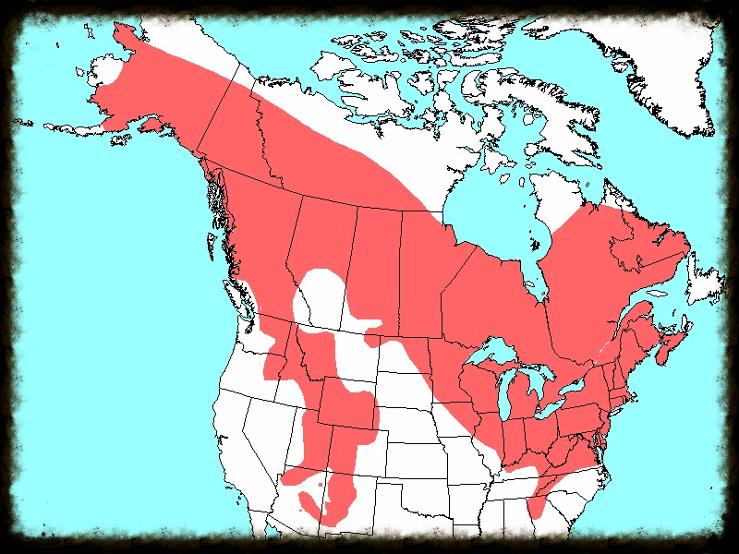
Distribution
American red squirrels are widely distributed across North America. Their range includes most of Canada and east of the Rocky Mountains in the United States. American red squirrels are abundant and not of conservation concern throughout much of their range. However, an isolated population of red squirrels in Arizona has experienced considerable declines in population size. In 1987, this portion of the population was listed as an endangered species.
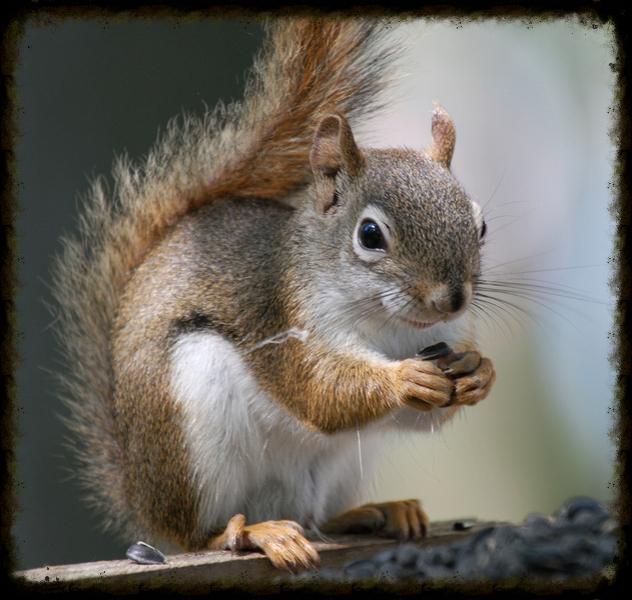
Reproduction
Red squirrels have a defined breeding season lasting 105 days that can occur either once or twice a year. They will mate in early spring from March to May and then again in August to early September. A second breeding period tends to occur in warmer areas of their range. Although mate pairings may occur, red squirrels are generally characterized as promiscuous. Animals in the best condition tend to breed more regularly and successfully than animals in poor condition. Red squirrels exhibit a scramble competition mating system, in which the main costs to males are locating receptive females. Males typically invade the territory of females in estrus and pursue them in obvious mate chases. During mate chasing, a single dominant male actively pursues a female and drives off other subordinate males using calls or direct chase.
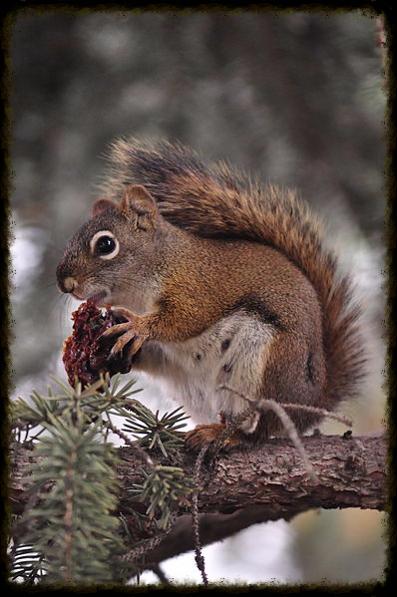
Food Habits
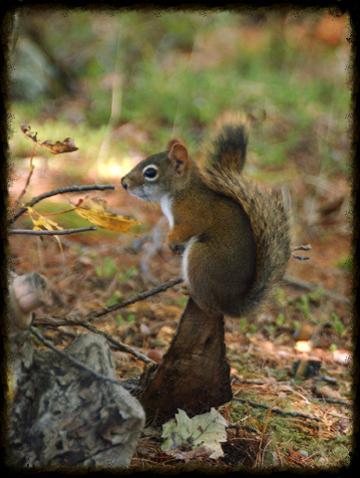
Ecosystem Roles
Red squirrels impact the forest ecosystem by dispersing seeds and fungi through caching and forgetting about or otherwise failing to return to food caches. The diversity and abundance of beneficial ectomycorrhizal fungi in these caches helps young trees acquire nutrients and grow. They limit the regrowth of trees by eating the seeds and inner tissues of the trees, which can cause significant damage to tree survival and value. Red squirrels provide a feeding opportunity for porcupines (Erethizontidae) during the winter by peeling away the bark of lodgepole pines. Their feeding habits also cause conifers to grow multiple tops, which reduces their timber value but increases suitable nest sites for many arboreal rodents (Rodentia) and passerine birds (Passeriformes). The increased availability of nest sites sustains species richness.
Red squirrels are host to a variety of endoparasites and ectoparasites. Endoparasitic species include 9 species of nematodes, 9 species of tapeworms including the genus (Hymenolepis). Other endoparasites include tularemia bacteria (Francisella tularensis) and Emmonsia crescens), and some kinds of protists like sarocysts (Sarocystis), and (Haplosporanigium). They are also vulnerable to fungal lung disease infection via adiaspiromycosis (Emmonsia parva). Ectoparasites of red squirrels include 31 species of mites, ticks, and chiggers (Glycyphagidae and Acarina), 25 species of fleas including Siphonaptera, Opisodasys robustus, Orchopeas caedens, Orchopeas neotomae, Orchopeas leucopus, Oropsylla idahoensis, Ceratophyllus vison. They may also carry botfly larvae (Cuterebra emasculator). Viruses that infect red squirrels are silverwater virus, California encephalitis virus, and Powassan virus.